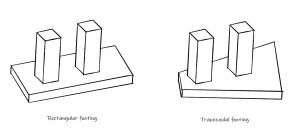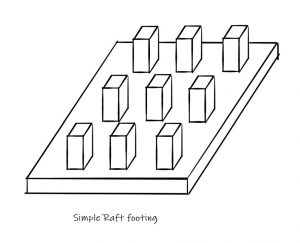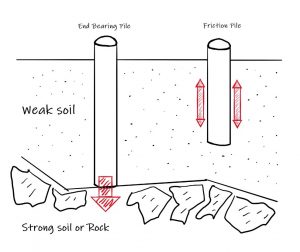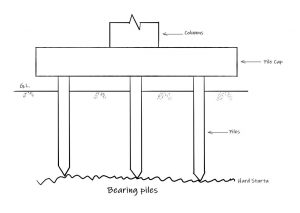When it comes to building a structure (like a house), there are various types of footings available. Each kind falls into one of two categories: shallow or deep foundations. It’s important to take time deciding on the foundation, as this will impact the building’s structural integrity. Load, depth and type of soil, weather and climate conditions all play into this decision.
Small, lightweight buildings usually adopt shallow footings, if the soil can provide adequate bearing capacity at a reasonable depth. With large loads (or if the soil has a low-bearing capacity), deep foundations are required. It’s best to bring in an Adelaide construction services team to oversee this.
The shallow foundation options
Strip Footing: Also known as spread footings due to wider bases than most load-bearing wall foundations, this shallow option carries a building’s load evenly, distributed across a large area. This means better stability.
This foundation option is most commonly used when the bearing soil layer is less than three metres from the ground surface. The soil layer should have the ability to resist the weight of the structure over the base. Strip footing should be avoided if the ground water is likely to raise above the bearing soil layer.
Figure 1: Strip Footing
Isolated Footing: Common in the building construction industry, isolated (or individual) footing contains a single column, also known as a pad foundation. It’s a square or rectangle footing. If it’s certain that no varying settlements will occur under the structure, isolated footing can be used.
Figure 2: Isolated Footings
Combined Footing: This type features two or more columns in close proximity. Combined footing is more stable when the columns are close enough so that their footings overlap.

Figure 3: Combined Footings
Raft (Mat) Footing: Reinforced concrete slabs are spread over the entire area of the building. This footing is chosen to carry the loads of larger areas, which minimises the pressure on ground soils.
Raft footing is considered when the structure’s loads on columns and walls are high, as it can prevent differential settlement of individual footings. It’s also economical when handling expansive soils, with a low bearing capacity.

Figure 4: Raft Footing
The deep foundation types
Pile Foundation: A series of long cylinders made from sturdy materials (steel or concrete), pile foundation is great for offering deep support. The structure above is held by friction or end-bearing, where all the loads are transmitted into a low level of subsoil.
This is a viable option if the soil in close proximity to ground surface isn’t adequate to resist heavy loads and the height of the strata is 5-50 metres.

Figure 5: End Bearing Pile (left) & Friction Pile (right)

Figure 6: Bearing piles
Drilled Shafts (Caisson) Foundation: While similar to the pile option, drilled shafts are casted in situ with high capacity and transfer even greater column loads. The loads are supported by shaft resistances.
When the depth of the hard strata reaches up to 100 metres below the ground surface, drilled shafts are suitable. However, this option isn’t viable when deep deposits of soft clays and loose, water-bearing granular soils are present. It also isn’t suitable where caving formations are difficult to stabilise, or where soils are made up of boulders or artesian aquifer.

Figure 7: Drilled Shafts Foundation
Building construction solutions advice
There are many different types of foundations and it’s easy to get overwhelmed. But without a sound foundation, everything on top of it is at risk.
For Adelaide renovations and extensions, talk to Solution for Construction. We work across residential, commercial and industrial, ensuring the structural integrity of buildings across Adelaide.
Our team of structural engineers are happy to offer advice, support and documentation to improve construction productivity. Start the process by booking a free 20-minute consultation with Naveesh, a leading structural engineer consultant in Adelaide.#